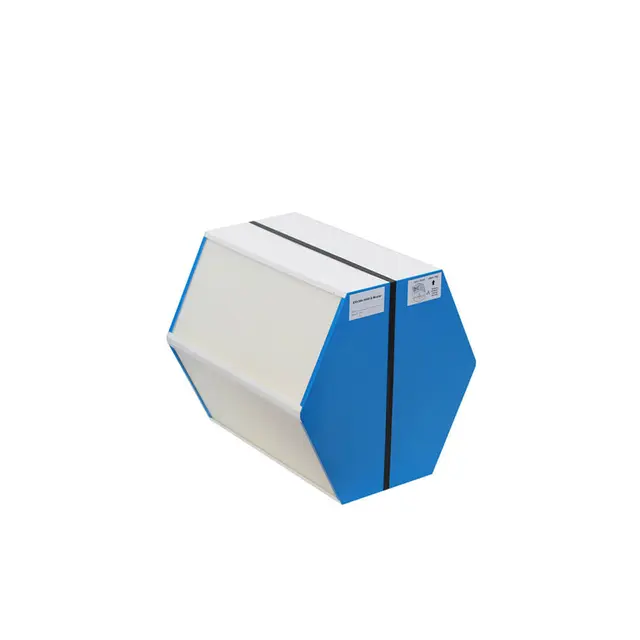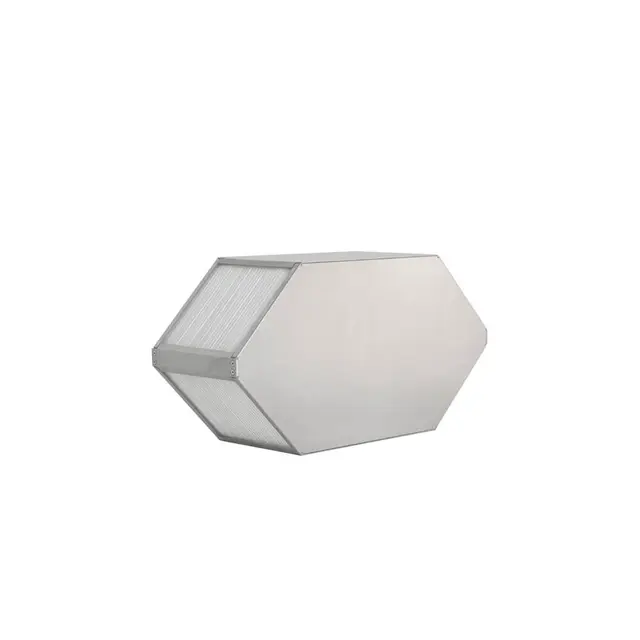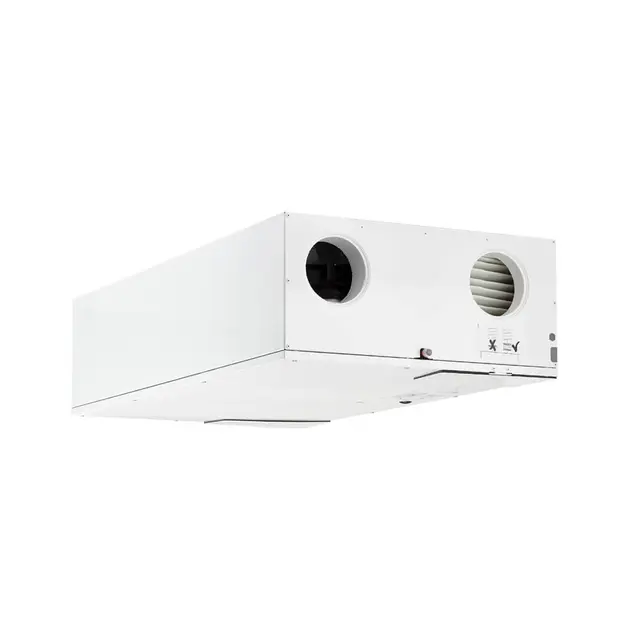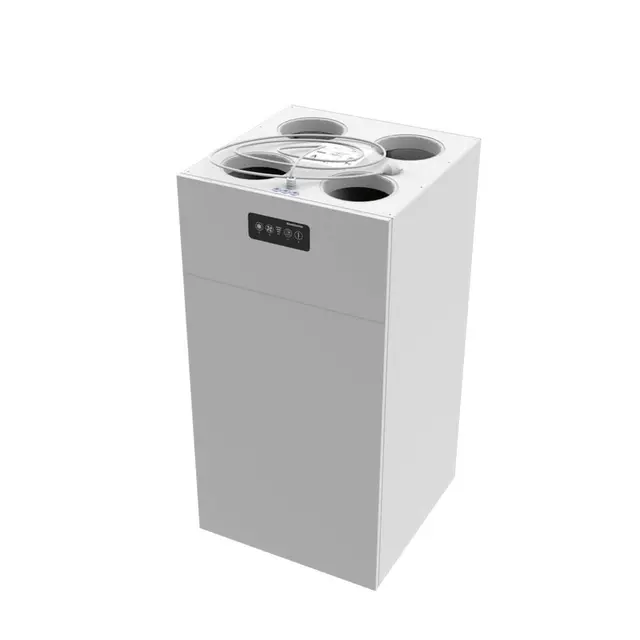Die Vorteile von Enthalpie-Wärmetauschern in Wohnungslüftungsgeräten

- Startseite
- Artikel
- Belüftung
- Die Vorteile von Enthalpie-Wärmetauschern in Wohnungslüftungsgeräten
Wärmetauscher sind das Herzstück eines Wohnungslüftungsgeräts. Hier erklären wir, wie ein Enthalpiewärmetauscher im Vergleich zu einer herkömmlichen Ausführung funktioniert und welche Vorteile er Bewohnern und Bauherren bietet.
As more and more homes are constructed to be as airtight as possible to cut down heat loss, the need for effective mechanical ventilation rises. The continual supply of fresh, clean air into an environment is vital to supporting the health and comfort of all residents all year round.
At the heart of these units is the heat exchanger. The heat exchanger is responsible for preserving the heat within a room or residence, so the temperature does not plummet when cold, fresh air from the outside enters the building. This eliminates the need to heat the air separately, ensuring the unit runs as efficiently as possible.
All Dantherm residential ventilation units offer high-efficiency heat recovery. However, something that is often overlooked is the humidity within a building, and how this is affected when air from outside is introduced - especially during the cold winter months.
In this article, we will discuss why this can be problematic, and how an enthalpy heat exchanger ensures that humidity levels are kept at a comfortable level at all times.
Conventional heat exchangers
First, it is important to establish how conventional heat recovery ventilation (HRV) works. The heat exchanger acts as a bridge between the two airstreams within an HRV unit - the stale air that is pulled from the building into the outside (the extract air), and the fresh air from outdoors which is flowing into the residence (the supply air).
These airstreams never mix, preventing any contaminants or viruses from inside the building to carry over to the fresh air entering the building. Instead, the heat exchanger allows the vast majority of the sensible heat energy from the extract air to pass into the supply air.
A traditional heat exchanger contains many plates (known as lamellas), which are typically made from aluminium or plastic. These store and transfer the heat energy from one airstream to the other, and this heat recovery minimises any drop in temperature caused by the supply air.
This heat recovery is ideal, as it keeps the environment at a comfortable, consistent temperature for longer, and reduces the need for residents to spend extra energy to heat up their home while their ventilation unit is operating.
However, as noted earlier, because these lamellas are made from rigid aluminium or plastic, this prevents anything other than heat energy from being transferred between the airstreams - including moisture.
The impact of low humidity
When people talk about humidity, they are usually referring to times when this is particularly high. The air feels thicker, people sweat more and it is generally an uncomfortable feeling.
Yet, many people are unaware of how problematic excessively low humidity can be. The ideal relative humidity indoors should range between 35%RH and 55%RH. If it falls below this range, it can have noticeable consequences:
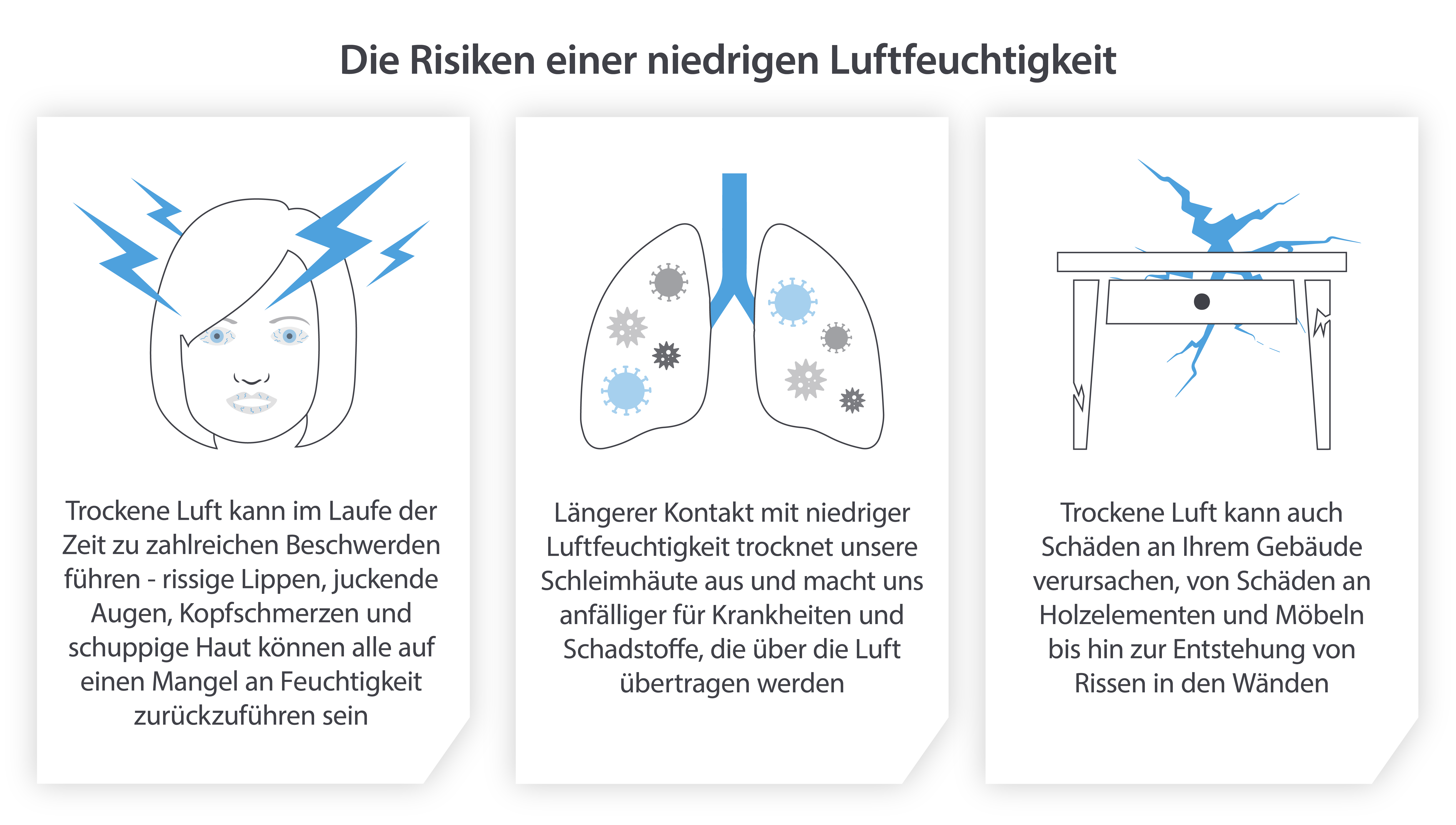
The impact of low humidity can range from general discomfort to putting your health and the structural integrity of your building at serious risk.
How does an enthalpy heat exchanger work?
In situations where low humidity is a prominent concern - particularly in colder climates - enthalpy recovery ventilation (ERV) can prevent this from becoming a constant problem.
Enthalpy determines the thermodynamic potential of a gas which, in as simple terms as possible, measures the heat content of the gas. The quantity of energy carried by the air depends largely on the water vapour content and the latent heat within it.
Conventional HRV heat exchangers are based on the condensation of water on the walls inside of the exchanger. This is designed to increase the efficiency of the exchanger, but means that condensate is left behind.
Conversely, an enthalpy heat exchanger is made from a special polymer membrane. This material allows moisture to penetrate it, unlike the aluminium or plastic used in a traditional heat exchanger.
Therefore, an enthalpy heat exchanger allows both heat and moisture to be passed from one airstream to the other. This means that the humidity within a building is kept at a consistent, comfortable level, removing the risk of excessive dryness.
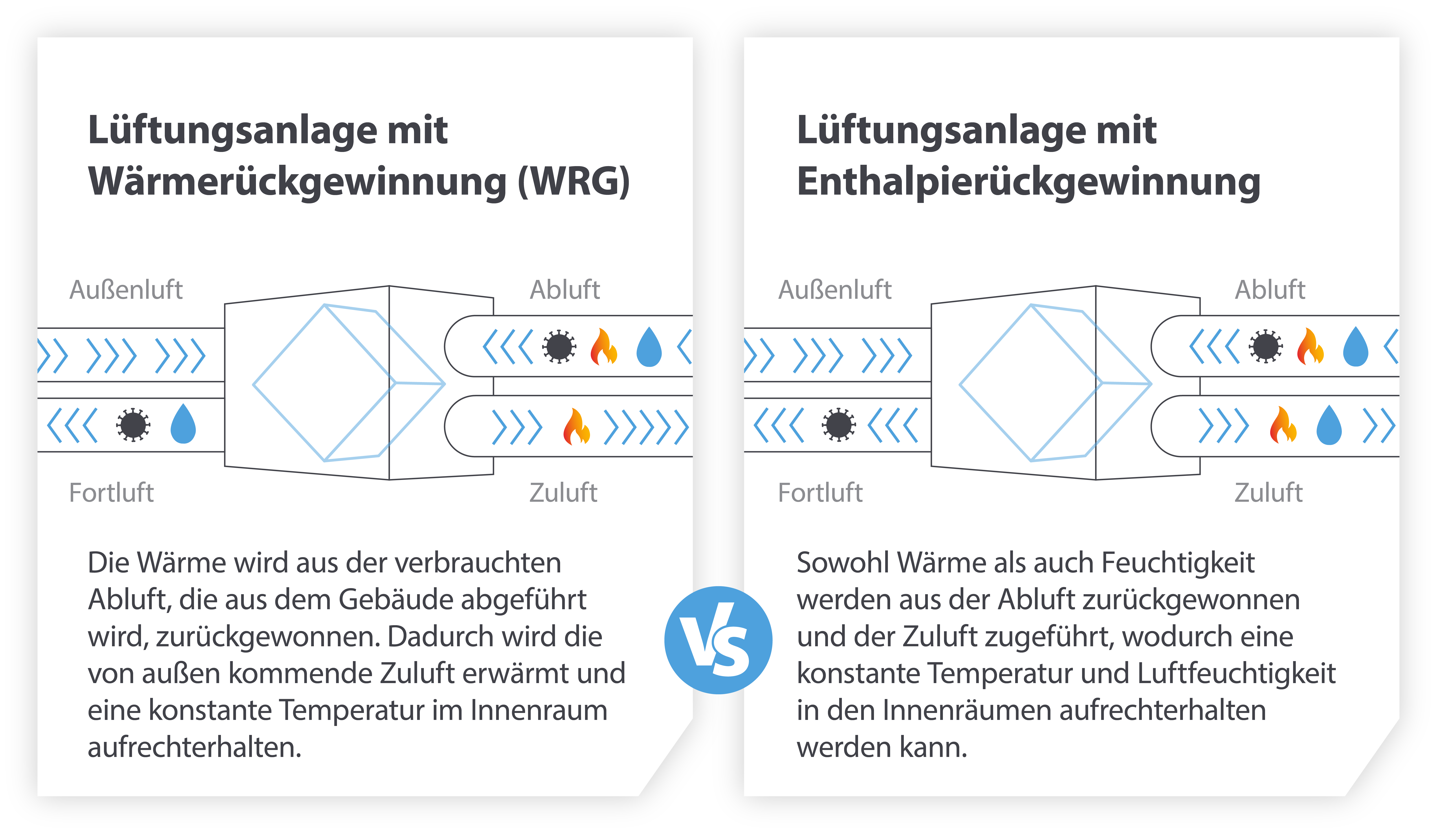
The benefits of an enthalpy heat exchanger
This additional capability of an ERV unit offers several advantages to indoor residences:
Maintaining comfortable humidity
First and foremost, by allowing for efficient humidity recovery, an enthalpy heat exchanger avoids any of the consequences associated with low humidity mentioned above. Instead, relative humidity will be maintained at a comfortable, pleasant level, protecting the health and wellbeing of both residents and buildings.
In addition, research from the Netherlands has illustrated that using an enthalpy heat exchanger brings the indoor relative humidity up to 10% higher than a conventional heat exchanger. This again provides reassurance at times where the humidity outside is low, such as during the winter, the humidity indoors will remain at a safe level.
Limited risk of freezing
As a conventional heat exchanger creates condensation, if the temperatures drop into minus numbers during the winter, it is possible for this condensation to freeze.
This is problematic because as the condensate builds up and freezes, this can significantly lower the efficiency of the ventilation unit’s heat recovery, meaning it will not work as effectively as it should until it defrosts.
With an enthalpy heat exchanger, because moisture passes through the polymer membrane and across airstreams, very little (if any) condensate will be left behind. This means that the heat exchanger will be at no risk of freezing..
Greater efficiency in cold temperatures
This greatly reduced risk of freezing ensures that enthalpy heat exchangers are noticeably more efficient during the colder months of the year. In the winter, the thermal efficiency of an ERV unit greatly outmatches a conventional HRV unit.
In addition, the enthalpy heat exchangers in Dantherm units can function down to -5ºC, without any preheating. This guarantees balanced ventilation for the main part of the year without preheating, which in turn reduces residents’ heating and electricity bills.
Hygienic design
The advanced polymer membrane used in these enthalpy heat exchangers blocks the transfer of any odours or contaminants between airstreams, without compromising the transfer of heat and humidity. This removes the risk of bacteria or viruses in the stale air inside the building being recycled back into the supply air.
Furthermore, the membrane contains built-in antimicrobial technology, making it resistant to both mould and bacteria. This ensures our enthalpy heat exchangers are extremely hygienic, and no danger to the residents who benefit from the ventilation unit.
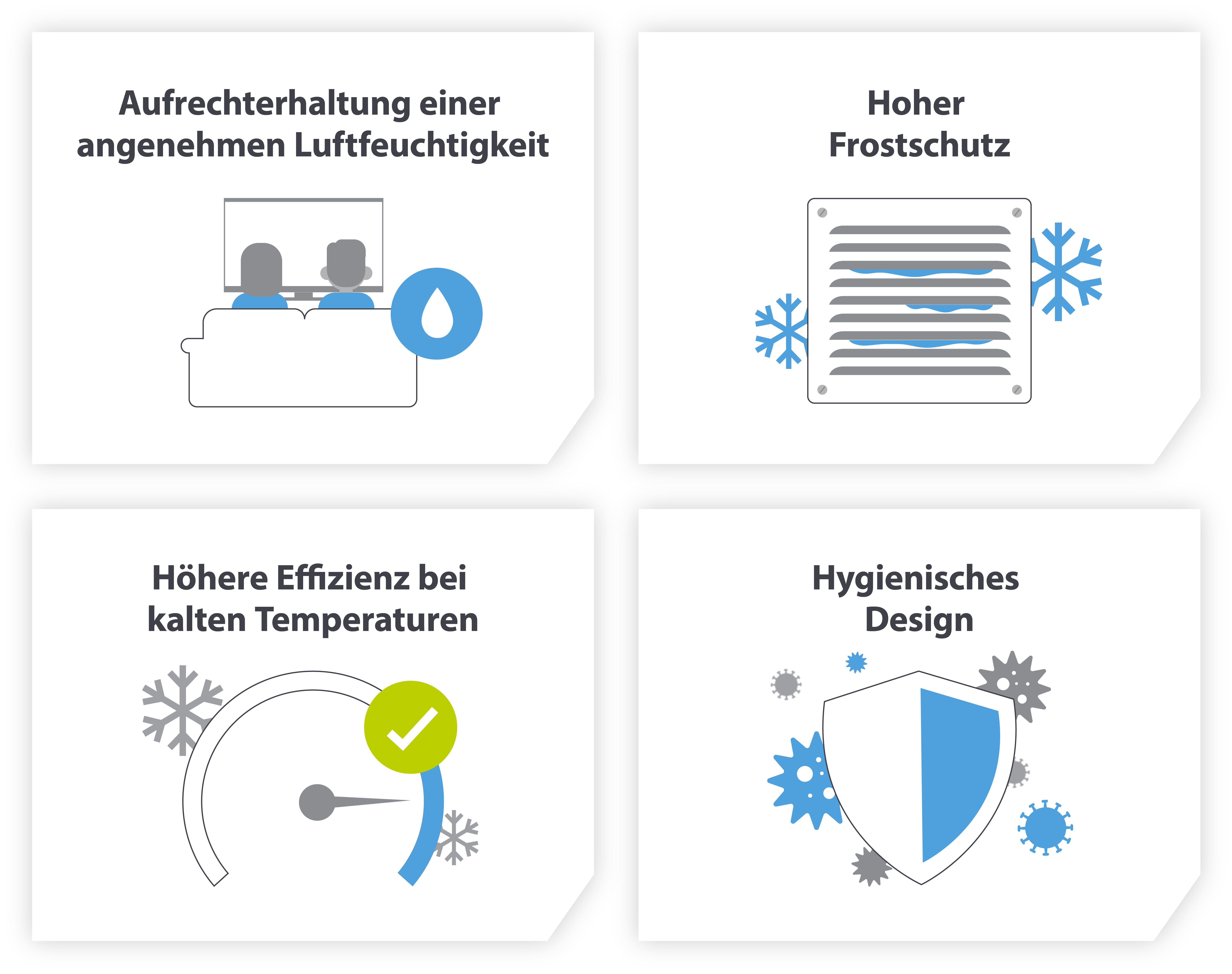
When should you not choose an enthalpy heat exchanger?
Although there are numerous benefits to using an enthalpy heat exchanger, there are circumstances where it is more appropriate to use a conventional heat exchanger.
Fundamentally, it comes down to climate. In colder, drier climates where you will want to preserve as much humidity as possible, an enthalpy heat exchanger is ideal.
At the other end of the spectrum, consistently humid climates would not benefit from an enthalpy heat exchanger. In these environments, it would operate a lot less efficiently than a conventional heat exchanger, and it would only help preserve humidity at a time where you will probably want to limit this as much as possible.
Discover the advantages of enthalpy heat exchangers
Dantherm’s residential ventilation range includes suitable units for all environments and climates. Our robust, reliable enthalpy heat exchangers can be used in the following units:
Introduced to the Dantherm range in 2016, many of our customers have benefitted from significantly lower energy bills and better indoor climates due to this landmark technology.
Of course, in climates where an enthalpy heat exchanger is not appropriate, our standard heat exchangers are equally dependable, ensuring highly efficient and consistent heat recovery within the home. We work closely with our customers to determine the most suitable solution for their requirements.
If you would like to know more about Dantherm’s residential ventilation units, or have any further questions about the advantages of enthalpy technology, get in touch using the form below.
Ähnliche Produkte
Ausgewählte Artikel

Hier finden Sie unseren umfassenden 28-seitigen Leitfaden für Installateure und andere Fachleute

Erfahren Sie, wie Sie die Luftqualität in Ihrem Haus verbessern können
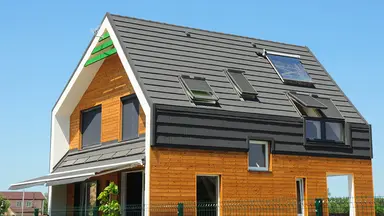
In jedem Passivhaus ist die richtige Menge an Frischluft mit minimalem Energieverbrauch von entscheidender Bedeutung
Benötigen Sie Hilfe bei der Auswahl der richtigen Lösung? Unser Team von über 100 Experten für Klimatisierung hilft Ihnen gerne weiter.
